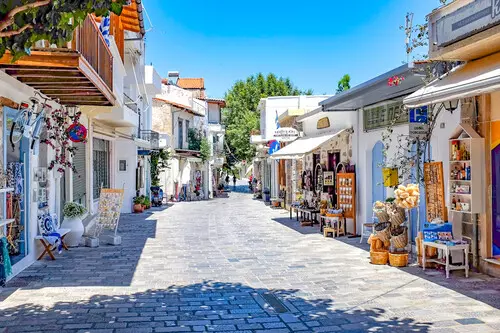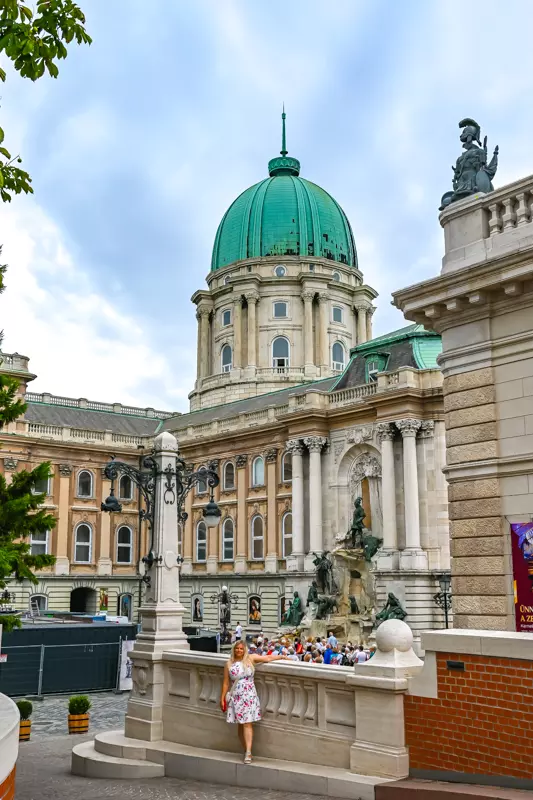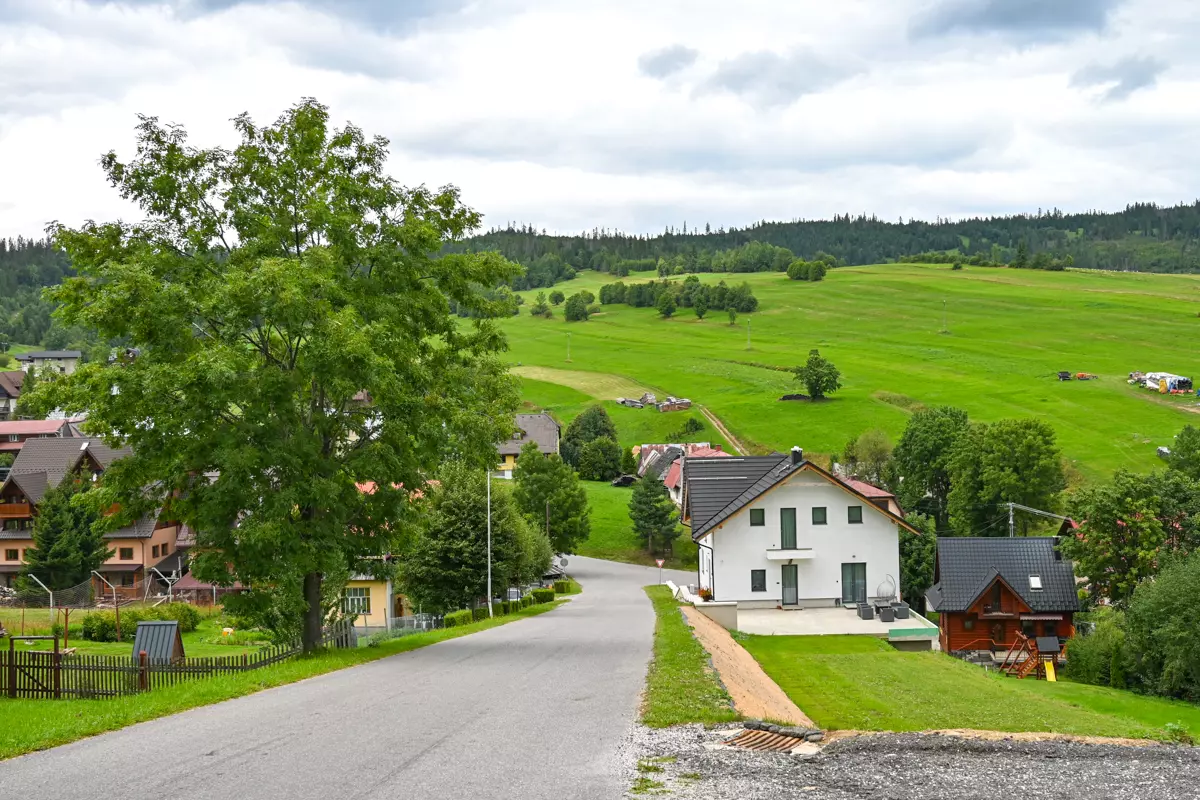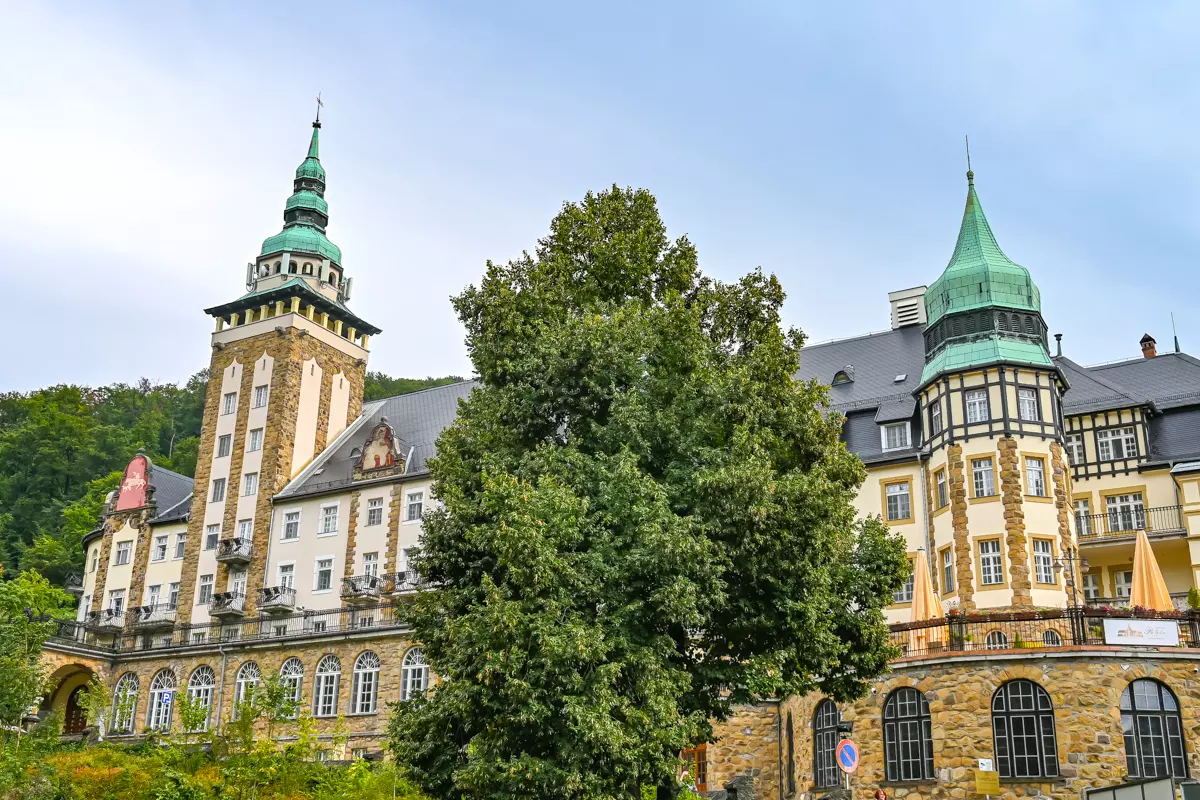24 Hours In Budapest: The Ultimate One Day Itinerary
Planning a quick trip to Hungary’s capital and wondering how to make the most of just one day? This itinerary will take you through Budapest’s highlights – from iconic landmarks to local flavors, so you can experience the city’s magic in only 24 hours.
Even if you have limited time, Budapest has a way of captivating. You’ll explore the grandeur of the Castle District, soak in the city’s cafe culture, admire sweeping views from the Danube, and finish the day in one of the legendary ruin bars.
I wrote this guide after my own trip to Budapest, when I had just a single day to explore, and it turned out to be enough to get a real feel for the city.
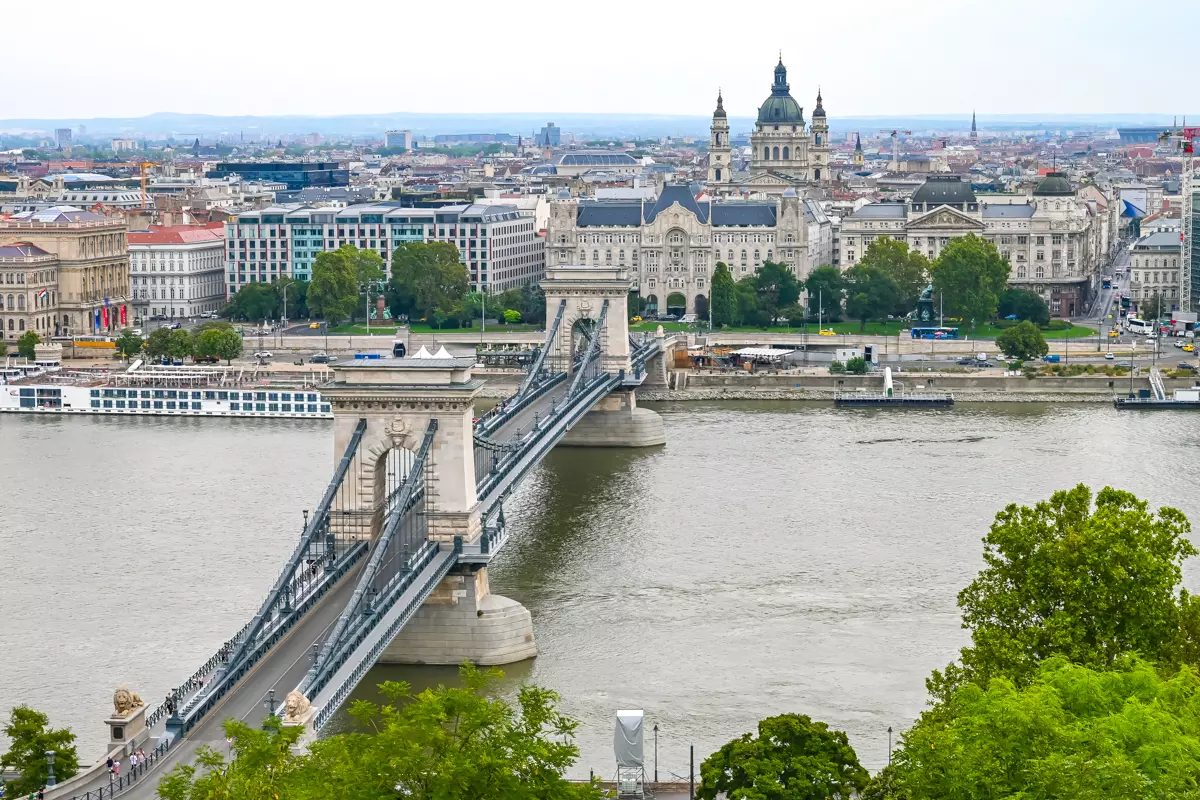
Budapest What To See & Do In One Day
Buda Castle
Kick off your 24 hours in Budapest bright and early by either walking up or hopping on the funicular to Castle Hill. It’s one of the most stunning spots in the city, where history, architecture, and those jaw-dropping views all come together. Sitting proudly on the hill, Buda Castle used to be home to Hungarian kings, and these days it’s packed with museums and galleries. Even if you skip the exhibitions, the castle grounds and the area around it are absolutely worth exploring.
Wandering around the Castle District feels like stepping back in time, with narrow cobblestone lanes twist between colorful houses and little cafes where you’ll want to stop for a coffee.
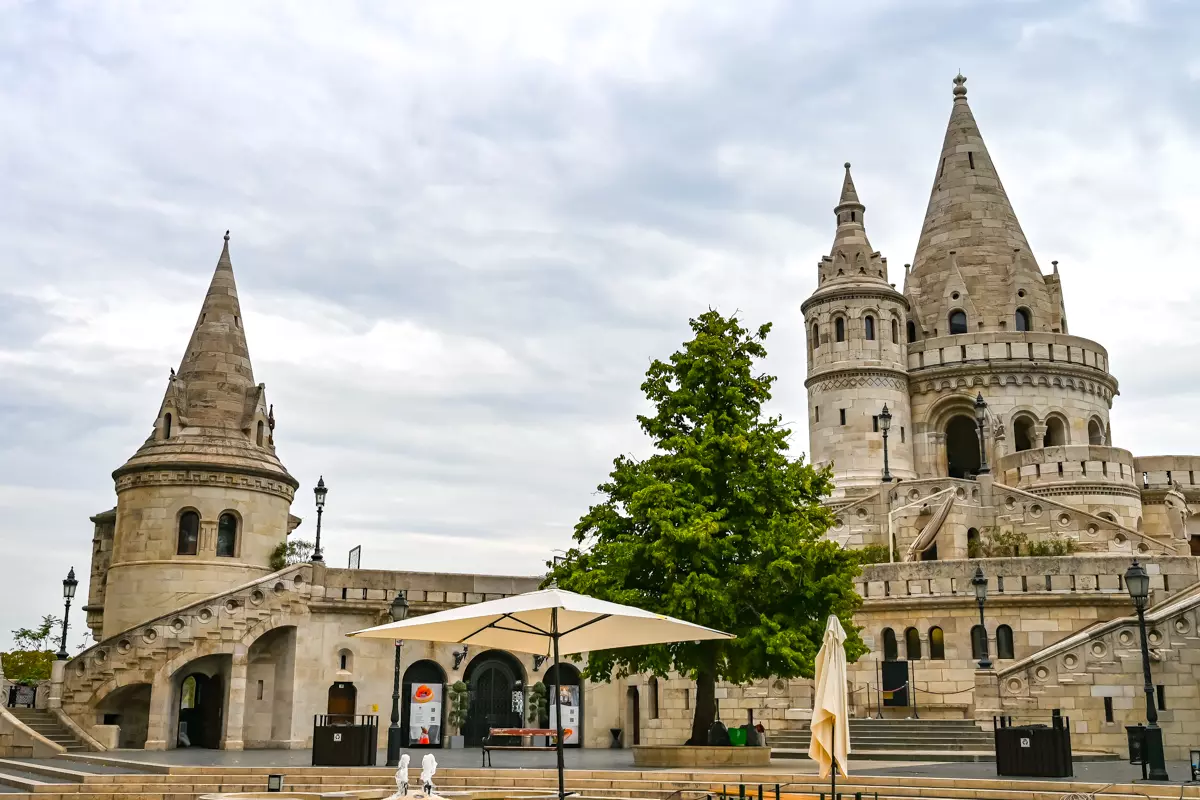
One of the biggest highlights here is the Fisherman’s Bastion – a fairytale-like white stone terrace with towers. From here, you get the best views over Budapest, including the Parliament on the banks of the Danube and the bridges connecting Pest. Just a few steps away you’ll find Matthias Church, with its eye-catching tiled roof and rich history, where several Hungarian kings were crowned.
Starting the day on Castle Hill was perfect for me. Since it was my very first stop in Budapest and still so early in the morning, I lingered the longest here, soaking up the views across the city.
Tip: Take the funicular up Castle Hill. It’s not just the quickest way, it’s also the most fun! If you’re looking for a cheaper ride, hop on bus No. 216, which drops you right next to Matthias Church.
Central Market Hall

After coming down from Castle Hill and crossing over to Pest, make sure to stop by the Great Market Hall. It’s one of Budapest’s liveliest and most colorful spots, buzzing with life from early morning. Built at the end of the 19th century, the hall itself is worth a look. Soaring iron beams, spacious vaulted interiors, and a vibrant tiled roof make it a true architectural gem.
Inside, you’ll find the true world of Hungarian cuisine. Here, you can pick up local spices, especially paprika, and try Hungarian salami, cheeses, or sweets. If you’re after a quick but authentic bite, head up to the second floor and try langos. It’s a fried dough flatbread usually served with sour cream, grated cheese, or garlic butter.
The Central Market Hall is also a great starting point for a foodie adventure. Many food tours begin here, giving you the chance not only to taste a variety of dishes but also to dive into local stories, flavors, and traditions.
Dohany Street Synagogue
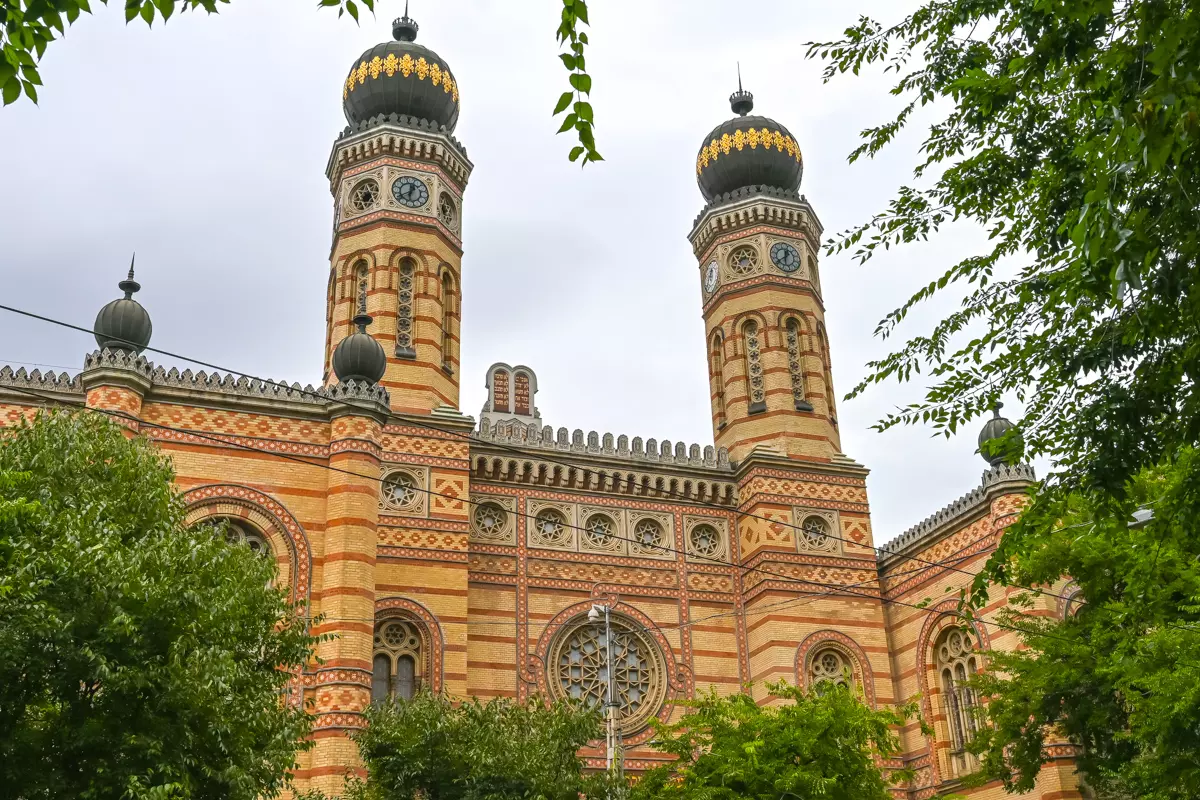
After enjoying some food, head over to the Jewish Quarter, home to the Dohany Street Synagogue. It’s not only the largest synagogue in Europe but also the second largest in the world. Built in the mid-19th century, it’s known for its Moorish-style architecture: a red-brick facade, intricate decorative patterns, and two striking towers that resemble oriental mosques.
The synagogue is more than just a religious site. It’s also a place that leaves you reflecting on Budapest’s past. Inside you’ll find a museum dedicated to the life of Hungary’s Jewish community, while in the courtyard stands the metal Tree of Life memorial, dedicated to the memory of Holocaust victims. Each leaf bears a family name, a poignant reminder of the city’s tragic past.
Tickets: Dohány Street Synagogue – reserve your fast track entry here.
St. Stephen’s Basilica
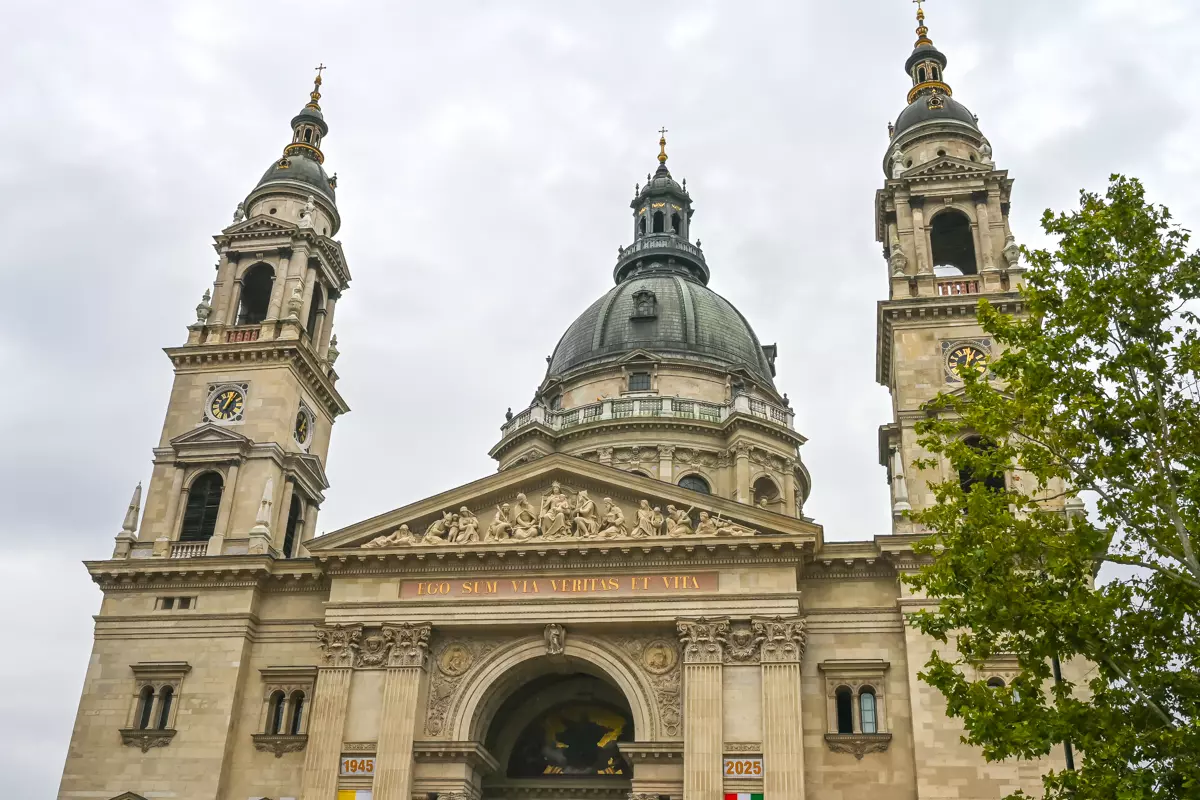
Continue your 24 hours in Budapest with a visit to St. Stephen’s Basilica. It’s the largest church in the city and one of Hungary’s most important religious landmarks, named after the country’s first king, Stephen. It took nearly half a century to build. The basilica blends neoclassical grandeur with lavish interior details.
As soon as you step inside, your eyes are drawn to the soaring vaulted ceilings, glittering golden altars, and countless artistic details. The basilica also holds the mummified right hand of St. Stephen, considered one of the most important symbols of the Hungarian nation.
Don’t miss the chance to climb up to the dome, or take the elevator if you prefer. From the viewing platform, you get a breathtaking 360-degree panorama of Budapest – from the Danube and its grand bridges to the rolling Buda Hills in the distance.
Hungarian Parliament

Next, make your way to the Parliament building – Budapest’s most iconic sight and one of Europe’s most impressive landmarks. Completed at the end of the 19th century, this neo-Gothic masterpiece stands out with its sheer size, countless spires, and ornate details. Stretching along the banks of the Danube, the building looks especially magical at sunset, glowing in golden light.
Of course, it’s worth setting aside some time to step inside the building. On a guided tour you’ll see the ornate central hall, the Grand Staircase, and most importantly, the Hungarian Holy Crown. It’s a unique opportunity to experience the country’s history and culture up close.
The Parliament is not only an architectural masterpiece but also a symbol of the nation’s identity, making it one of the most important stops on your 24 hours in Budapest.
Tip: Tours often sell out, so it’s best to book tickets online in advance through the official Parliament website. EU citizens get discounted entry, while non-EU visitors pay a bit more. Don’t forget to bring your ID or passport, as you’ll need it to enter. If you can’t find tickets on the official site, you can purchase them through this website.
Waterfront & Cruise

After visiting the Parliament, make sure to spend some time walking along the Danube promenade. Here Budapest reveals all its beauty. Bridges line up before your eyes, grand buildings surround you, and you can feel the city’s pulse simply by walking along the river. One of the most moving places on the promenade is the Shoes on the Danube memorial, dedicated to the victims of the Holocaust.
The promenade is especially beautiful in the evening, when the sun sets and the city slowly lights up. That’s when I suggest relaxing and enjoying a cruise on the Danube River. From the water, Budapest looks completely different – you’ll see the Parliament, Buda Castle, Fisherman’s Bastion, Gellert Hill, and the many bridges, their lights shimmering on the river.
The cruise takes about an hour but leaves a truly great impression. I think it’s one of the most beautiful ways to finish a day’s sightseeing in Budapest and enjoy the city’s grandeur from a new perspective.
Good To Know: Most Danube cruises take place in the evening, when Budapest shines with lights. Boats depart from several piers on both sides of the Parliament. The most convenient way to get tickets is to book online in advance – this way you can choose the departure point closest to your hotel. By reserving ahead, you can also decide what kind of cruise you want, whether it’s a quick sightseeing ride, a romantic dinner cruise, or a longer trip with tastings.
Jewish Quarter
After the cruise and a walk along the promenade, if you’ve still got some energy left, head back to the Jewish Quarter to end your day. As evening approaches, it becomes one of the liveliest parts of Budapest, full of cafes, restaurants, and the city’s most famous bars. Here you’ll find the iconic ruin bars – unique places set up in abandoned buildings and courtyards, decorated with vintage objects, neon lights, and works of art.
The most popular choice is Szimpla Kert, which has become a true symbol of the city. Inside you’ll find several rooms, different music styles, an artsy vibe, and plenty of locals as well as travelers from around the world. Beyond Szimpla, the district is packed with other bars offering live music or DJ sets, so everyone can find their perfect atmosphere. And if you’re hungry, you’ll find plenty of options. Many of these bars and nearby eateries also serve food, from local snacks to international dishes to simple but hearty dinners.
How To Get To Budapest, Hungary
You can easily reach Budapest by plane, train, bus, or car. It’s one of the most popular destinations in Central Europe, so transportation connections are excellent. Once you arrive, getting around the city is simple thanks to an efficient public transport system of metro, trams, and buses.
By Plane
Budapest Ferenc Liszt International Airport (BUD) is the main international gateway to Hungary, located about 20 km southeast of the city center. It’s served by many major airlines such as Lufthansa, Air France, KLM, Turkish Airlines, and Emirates. It’s also the main hub for Wizz Air, which means there are plenty of budget flights from all over Europe.
How to get from the airport to the city center:
Bus 100E – a direct route to Deak Ferenc Square in the center, about 35 minutes.
Bus 200E plus the M3 metro – a cheaper option connecting the airport to Kőbánya-Kispest metro station.
Taxi or Bolt – the ride takes 30–40 minutes, depending on traffic.
By Train
Budapest has three main railway stations: Keleti, Nyugati, and Deli. Most international trains from Vienna, Prague, Bratislava, or Munich arrive at Keleti Station. From there, it’s easy to transfer to the metro or trams. Trains run frequently and are a comfortable way to travel.
By Bus
Buses are one of the cheapest ways to reach Budapest from other major European cities. The most popular companies are FlixBus and RegioJet. Most buses arrive at Nepliget station on the M3 metro line, so getting to the center is quick and easy. Modern coaches usually offer Wi-Fi, power outlets, and comfy seats.
Best Time To Visit Budapest
The best time to visit Budapest is from April to mid-June and in September–October. During these months, the weather is pleasantly warm but not hot, and the city is less crowded with tourists. It’s the ideal season for strolling around Buda Castle, taking Danube cruises, or spending evenings in the bars.
In summer, especially July and August, Budapest sees the highest number of visitors, and temperatures often rise above 30°C. That’s exactly when I visited, in late summer. The city was full of tourists, and some places even felt a bit overcrowded.
Average Temperature
Where To Stay In Budapest
Budapest offers a wide range of accommodation – from budget-friendly hostels to luxurious hotels with river views. Here are some of my recommendations for every budget to help you choose what’s right for you.
Budget Hotels
Dean’s Home Budapest – a modern and affordable hotel in the lively 9th district, featuring bright, comfortable rooms. Guests can enjoy free Wi-Fi, a rooftop terrace, a 24/7 gym, and a spacious common area with games and co-working spaces.
Maverick City Soho – located in the Jewish Quarter, this modern hostel offers both dorms and private rooms. The interiors blend contemporary style with historic charm in one of Budapest’s liveliest neighborhoods.
Mid-Range Hotels
Hotel Memories Budapest – stylish and centrally located, with breakfast included. Rooms are modern and cozy, and the hotel sits just a short walk from major attractions and transport links.
Estilo Fashion Hotel – situated near the Central Market Hall and Liberty Bridge, this hotel is perfect for those who want to explore both Buda and Pest on foot.
Luxury Hotels
Four Seasons Hotel Gresham Palace – an Art Nouveau masterpiece by the Chain Bridge, offering stunning Danube views and first-class service. The grand architecture and elegant interiors make it one of Budapest’s most iconic landmarks.
Aria Hotel Budapest – a boutique luxury hotel themed around music, with elegant rooms, a rooftop bar, and a cozy spa. Each room celebrates a different musical style, creating a unique and refined atmosphere.
How To Get Around Budapest

The best way to explore Budapest is on foot, especially in the central parts of Buda and Pest where most attractions are close to one another. Still, the city has a reliable and affordable public transport network with metro, trams, buses and trolleybuses, making it very easy to get around.
Metro
The Budapest metro is the oldest in continental Europe and has four lines (M1–M4). Line M1, also called the Millennium Underground, is a UNESCO World Heritage site and runs beneath Andrassy Avenue. The metro connects key parts of the city – from Heroes’ Square to the Danube riverbanks. Trains run daily from about 4:30 A.M. to 11 P.M.
Trams
Budapest’s yellow trams are an iconic part of the city. If you have some free time, hop on Line 2, often ranked among the most beautiful tram routes in the world. It runs along the Danube promenade, passing the Parliament, Chain Bridge, and Buda Castle.
Buses &Trolleybuses
Buses and trolleybuses complement the metro and tram network, especially useful for reaching residential neighborhoods or the higher parts of the Buda Hills. After midnight, when the metro stops running, night buses operate – a convenient option if you’re out late.
Taxis & Ride-Sharing
Taxis in Budapest are generally cheaper than in many other European capitals, but it’s best to use official companies to avoid dishonest drivers. Bolt is also widely available and often cheaper than taxis.
FAQs About 24 Hours In Budapest
Yes. Although the city is quite large, you can cover the main sights in 24 hours. You just need a well-planned route and be prepared to walk a lot.
Many places can be reached on foot, but the metro and trams are great for saving time. For short stays, it’s convenient to buy a 24-hour travel pass that works on all public transport.
Yes, Budapest is generally considered a safe city. Of course, like in any capital, you should watch out for pickpockets in crowded areas and be cautious at night in quieter neighborhoods.
Popular choices include sweet paprika, Hungarian salami, Tokaji wine, or palinka (fruit brandy). You can also find beautiful handicrafts, ceramics, and traditional embroidered textiles.
Budapest is quite affordable compared to many other European capitals. On average, you can expect to spend around €40–€60 per day, including meals, public transport, and a few entrance tickets. Of course, costs can go higher if you choose fine dining or luxury experiences, but even on a budget you’ll find plenty of great options.
Hungary’s official currency is the forint (HUF). While some tourist-oriented places may accept euros, the exchange rate is usually unfavorable. It’s best to pay in forints. You can withdraw cash from ATMs in the city or pay by card, which is widely accepted almost everywhere.
Book your flight
For the best flight deals, I always rely on Skyscanner. Features like Multi-city and Explore Everywhere help me uncover incredible travel opportunities.
Rent a car
Discovercars is my top choice for comparing car rental prices for any road trip around the world. The booking experience is always smooth and easy.
Travel insurance
SafetyWing provides affordable travel medical insurance with global coverage, perfect for digital nomads and long-term travelers.
Book Tours & Attractions
Experiencing a destination to the fullest is easier with a well-planned itinerary. I use GetYourGuide for guided tours and Tiqets for quick access to museum and amusement park tickets.
Protect yourself online by VPN
No matter where I go, I always use NordVPN for secure browsing and to ensure I can access websites that might be blocked in certain countries.
Disclosure: I only suggest companies that I personally rely on. If you use the affiliate links in my posts to book services, I’ll earn a small commission, with no extra cost to you.
Tried 24 hours in Budapest one day itinerary? Share your favorite moments in the comments!
Share on

A title
Image Box text
Hi, I’m Evelina, a travel enthusiast who loves nature, peace, and authentic places. I cherish the freedom to explore and learn with each adventure, whether it’s hiking trails, stunning beaches, natural parks, unique architecture, or rich cultural heritage. I hope my experiences inspire you to embark on your own journeys!
